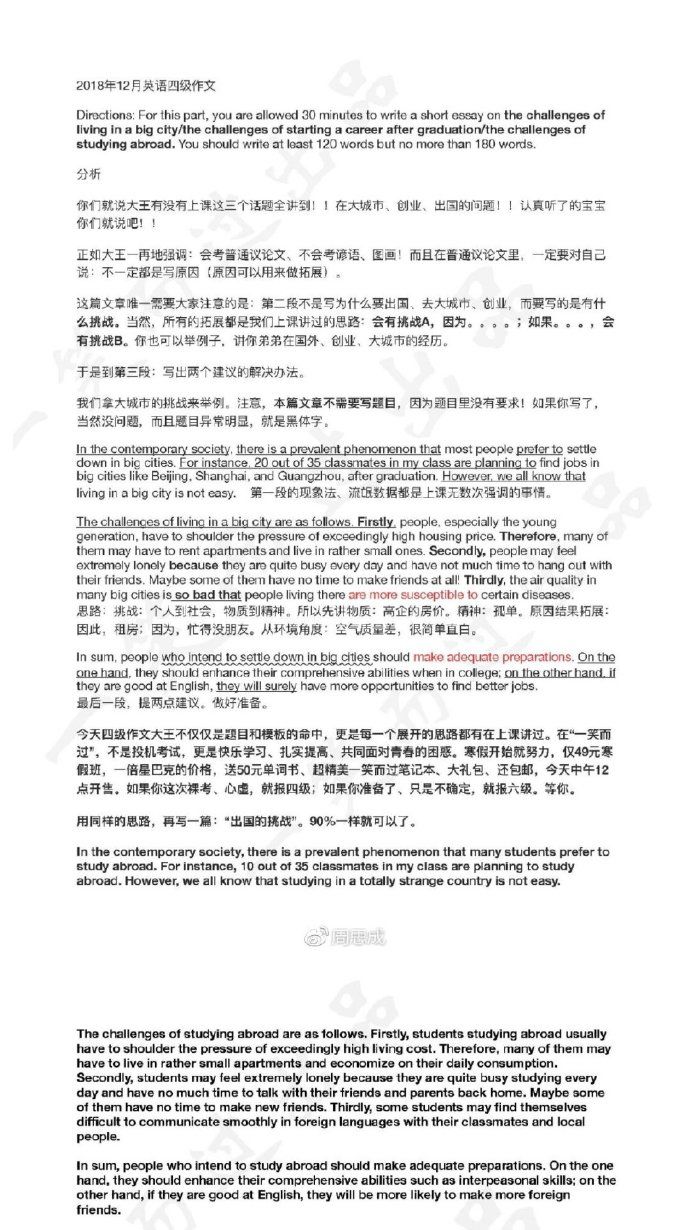LSAT考试模拟试题:LSAT考试试题一b
|
5. The passage suggests that both Waugh and Oakes consider James's novels to have (A) too much material that is extraneous to the solution of the crime. 6. It can be inferred from the passage that, in the author's view, traditional detective fiction is characterized by (A) concern for the weaknesses and doubts of the characters 7. The author characterizes the position of some critics as "inverted snobbery" (line 17) because they hold which one of the following views? (A) Critics of literature must acknowledge that they are less talented than creators of literature. 8. Which one of the following quotations about literature best exemplifies the "familiar" attitude mentioned in lines 5-9? (A) "The fantasy and whimsy characteristic of this writer's novels qualify them as truly great works of literature." Many Native Americans view the archaeological excavation and museum display of ancestral skeletal remains and items buried with them as a spiritual desecration. A number of legal remedies that either (5) prohibit or regulate such activities may be available to Native American communities, if they can establish standing in such cases. In disinterment cases, courts have traditionally affirmed the standing of three classes of plaintiffs: the deceased's heirs, the owner of the (10) property on which the grave is located, and parties, including organizations or distant relatives of the deceased, that have a clear interest in the preservation of a particular grave. If an archaeologically discovered grave is of recent historical origin and associated with (15) an identifiable Native American community, Native Americans are likely to establish standing in a suit to prevent disinterment of the remains, but in cases where the grave is ancient and located in an area where the community of Native Americans associated with the (20) grave has not recently lived, they are less likely to be successful in this regard. Indeed, in most cases involving ancient graves, to recognize that Native Americans have standing would represent a significant expansion of common law. In cases where standing can (25) be achieved, however, common law may provide a basis for some Native American claims against archaeologists and museums. Property law, for example, can be useful in establishing Native American claims to artifacts that (30) are retrieved in the excavation of ancient graves and can be considered the communal property of Native American tribes or communal property of Native American tribes or communal. In Charrier v. Bell, a United States appellate court ruled that the common law doctrine of abandonment, which allows the finder (35) of abandoned property to claim ownership, does not apply to objects buried with the deceased. The court ruled that the practice of burying items with the body of the deceased "is not intended as a means of reliquishing ownership to a stranger," and that to (40) interpret it as such "would render a grave subject to despoliation either immediately after interment or after removal of the descendants of the deceased from the neighborhood of the cemetery." This ruling suggests that artifacts excavated from Native American (45) ancestral graves should be returned to representatives of tribal groups who can establish standing in such cases. More generally, United States courts have upheld the distinction between individual and communal (50) property, holding that an individual Native American does not have title to communal property owned and held for common use by his or her tribe. As a result, museums cannot assume that they have valid title to cultural property merely because they purchased in (55) good faith an item that was originally sold in good faith by an individual member of a Native American community |








